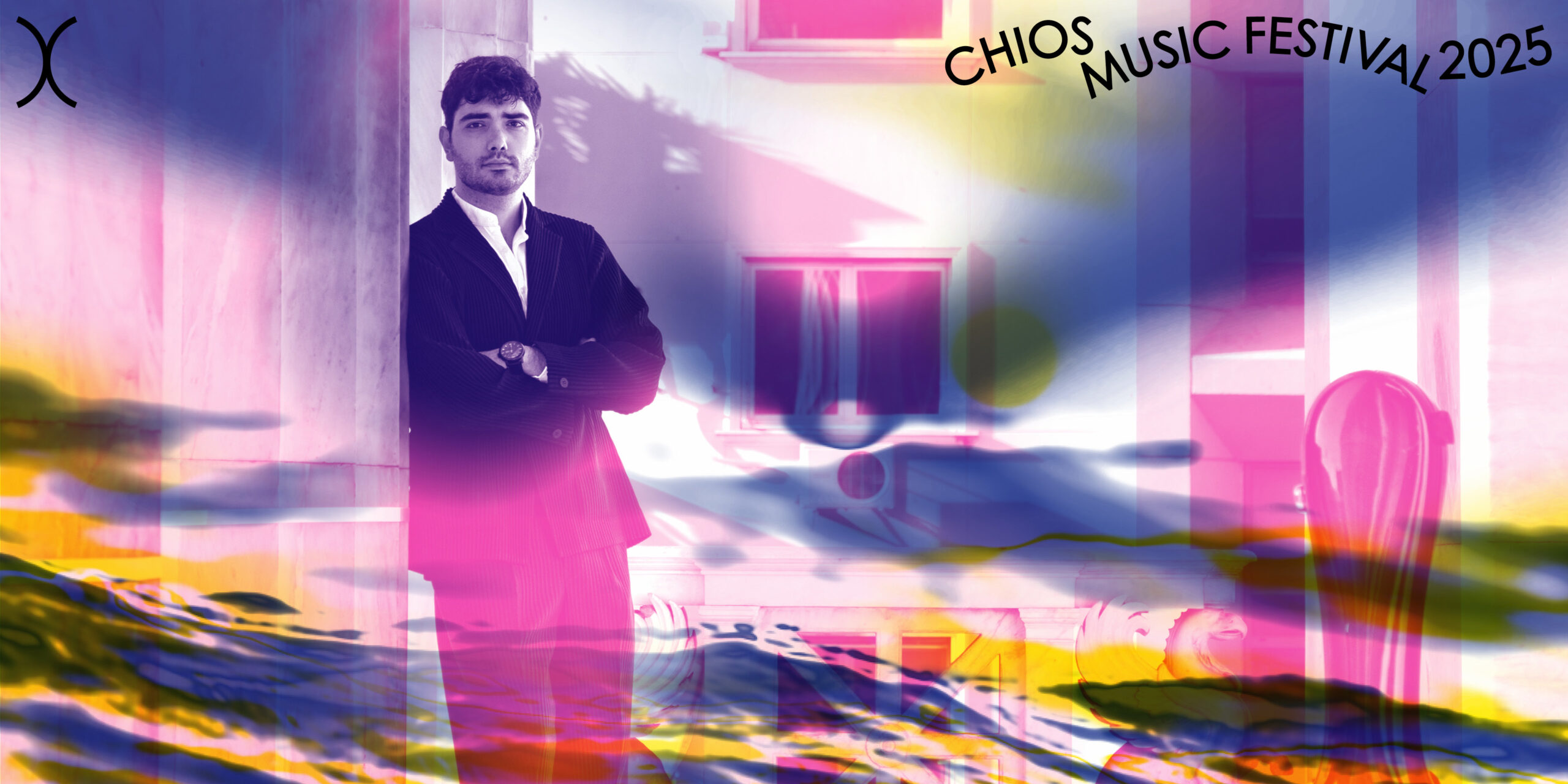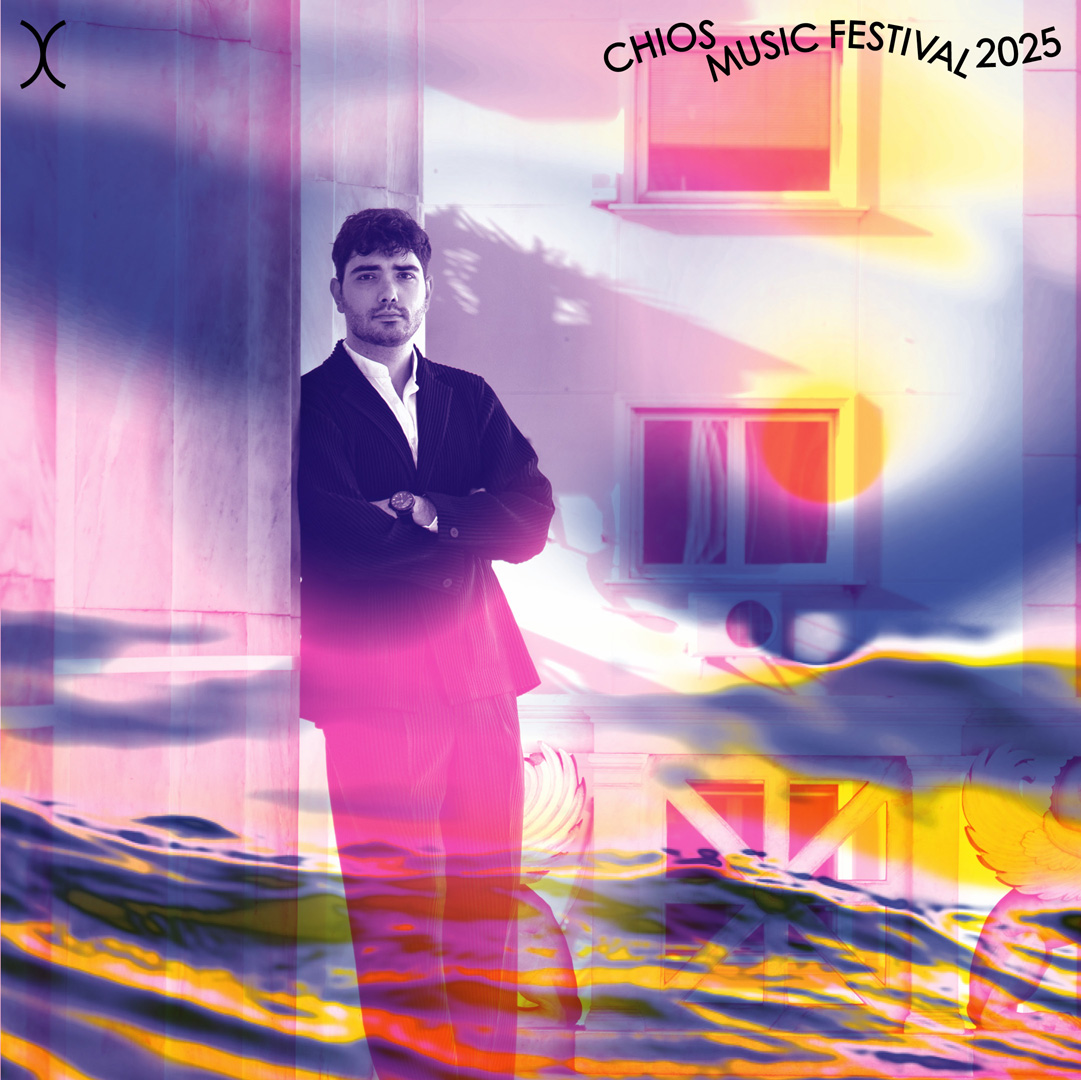

DIMITRIS SOUKARAS – MONOLOGUES
MUSICOLOGICAL NOTE
Leo Brouwer (1939-)
(arrangement for electric guitar: Dimitris Soukaras)
Paisaje Cubano Con Rumba (Cuban Landscape with Rumba)
Johann Sebastian Bach (1685-1750)
(arrangement for guitar: Dimitris Soukaras)
Sarabande BWV 1002 & Prelude BWV 1012
Vicente Asencio (1908-1979)
La Joia (Joy)
La Calma (Calm)
Maurice Ravel (1875-1937)
(arrangement for guitar: Dimitris Soukaras)
À la Manière de Borodine
Erik Satie (1866-1925)
(arrangement for guitar: Dimitris Soukaras)
Gymnopédie No. 1
Gnossienne No. 1
Jorge Cardoso (1949-)
Milonga
Roland Dyens (1955-2016)
Tango en Skaï
Leo Brouwer (1939-)
El Circulo del Oráculo (The Oracle Circle) – Dedicated to Dimitris Soukaras
Belle Chen (1988-)
Anamneses (Anamnesis) – Dedicated to Dimitris Soukaras
Dimitris Soukaras (1995-)
Reflections of Corea
Based on Children’s Songs No. 1 and No. 3 by Chick Corea
Leo Brouwer (1939-)
(arrangement for electric guitar: Dimitris Soukaras)
Paisaje Cubano Con Rumba (Cuban Landscape with Rumba)
The popular Cuban composer, guitarist and conductor Leo Brouwer wrote in 1985 the famous Paisaje Cubano Con Rumba for guitar quartet. Full of energy and intense dance elements (to the rhythm of the rumba), it is already a landmark work in the guitar quartet repertoire. In this imaginative arrangement for solo electric guitar, the award-winning Dimitris Soukaras uses the sound effects of his pedalboard to capture the full atmosphere of Brouwer’s original quartet.
Johann Sebastian Bach (1685-1750)
(arrangement for guitar: Dimitris Soukaras)
Sarabande BWV 1002 & Prelude BWV 1012
Johann Sebastian Bach was deeply aware of the spiritual dimension of music and wanted his works to nourish the soul as well as entertain. During his lifetime, he often arranged not only his own music, but also that of other composers such as Vivaldi, Telemann, Marcello and Torelli. Two of the guitarists’ most popular and widely performed works are the arrangements by Sarabande from Bach’s first solo violin partita and the Prelude from sixth solo cello suite. Both works require a great deal of technical training from the performer, as well as expressive imagination and maturity. Dimitris Soukaras presents his own virtuoso arrangement.
Vicente Asencio (1908-1979)
La Joia (Joy)
La Calma (Calm)
The Spanish composer Vicente Asencio wrote the famous suite Colletici Íntim in five movements for classical guitar in 1965, dedicated to the guitarist Narciso Yepes, in order to express various human states of mind. Yepes, a student of Asencio’s, said of this particular cycle of his teacher’s compositions that “it is a collection of separate elements which, even before they were put together, were connected by invisible links”.
La Joia, which expresses joy, is inspired by the folk music of Valencia. It is characterised by intense rhythms, quite virtuosic and very expressive, while stylistically it belongs to the composer’s favourite tonal language. La Calma, the third part of the cycle, is written in a more romantic musical language and expresses the tranquillity of the soul. Many compare it to the dream song of a barcarolle.
Maurice Ravel (1875-1937)
(arrangement for guitar: Dimitris Soukaras)
À la Manière de Borodine
In 1913, the French Impressionist composer Maurice Ravel wrote an exciting piano waltz with characteristic harmonies on an ostinato pedal point, reminiscent of the Serenade from the Petite Suite by the Russian composer Borodin. It is well known that Ravel regarded Borodin as an early pioneer of the Impressionist style. Dimitris Soukaras’s doctoral thesis focused on the role of the performer through the creation of new works for guitar by non-guitarist composers. As a creator of unique guitar arrangements he has received the best reviews. One of them is an arrangement of Ravel’s À la Manière de Borodine.
Erik Satie (1866-1925)
(arrangement for guitar: Dimitris Soukaras)
Gymnopédie No. 1
Gnossienne No. 1
French composer and pianist Erik Satie published in 1888 the three Gymnopédies for solo piano that were to become his most popular pieces. The first in particular stands out for its melodiousness, its unconventional harmonic accompaniment and the rubato in its interpretation. As a later composition, Gnossienne No. 1 has a more complex harmonic texture and rhythmic processing. Many have arranged these specific works by Satie for guitar. In today’s concert, Dimitris Soukaras presents his own arrangement, with a fresh look, characterised by intriguing virtuoso passages.
Jorge Cardoso (1949-)
Milonga
The Argentinian composer and guitarist Jorge Cardoso has written more than 400 works. Yet, by far the most popular and loved by the public remains the Milonga, the last of the 24 Piezas Sudamericanas of 1980. The milonga is an Argentine dance and is considered by many to be the precursor to the tango. Because of the intimacy of this particular dance and Cardoso’s astonishing harmonic virtuosity, there are many interpretative approaches and conflicting opinions about the tempo of the piece, the rubato parts and other elements of interpretation. It is no coincidence that many recordings of this famous solo guitar piece have been released all over the world.
Roland Dyens (1955-2016)
Tango en Skaï
The award-winning French composer, guitarist and teacher Roland Dyens, whose contribution to the contemporary classical guitar repertoire is impressive and varied, published Tango en Skaï in 1985. A relatively short but very virtuosic work (especially in its rhythm) with a tango flavour that quickly became very popular throughout the world, to an extent that its creator could not have imagined. Before it was published it was part of Dyens’s concert improvisations. It remains one of the most popular concert and competition pieces for guitar, and has been recorded and arranged countless times.
Leo Brouwer (1939-)
El Circulo del Oráculo (The Oracle Circle) – Dedicated to Dimitris Soukaras
The work of the Cuban composer Leo Brouwer is characterised by its high artistic value and constitutes an international reference in today’s multicultural reality. This particular work for guitar was written in 2023 and is dedicated to Dimitris Soukaras. It was the wish of the world-famous composer to create a piece with reference to Greece. It consists of four parts:
- The Sudden Events Surrounding the Dream
- The Journey to the Oracle
- The Circle of the Oracle
- The Oracle
Belle Chen (1988-)
Anamneses (Anamnesis) – Dedicated to Dimitris Soukaras
The work Anamnesis (in four movements) was born out of a conversation between the award-winning guitarist Dimitris Soukaras and the young composer and pianist Belle Chen, during which he shared memories of his childhood in Greece. The work is divided into four sets:
- Departure: The sense of departing.
- Drops: Rhythmic images of water – sounds of raindrops / sea drops – underwater sounds.
- Reflections: The simplicity of a melody – reflections of light on the surface of water.
- A Song: The song as an element of memory and connection. There are moments of improvisation that allow the performer to express themselves freely, conveying the spirit of the vividness and colours described by the memories. Bird sounds.
Dimitris Soukaras (1995-)
Reflections of Corea
Based on Children’s Songs No. 1 and No. 3 by Chick Corea
The American jazz pianist and composer Chick Corea recorded the album Children’s Songs in 1983, which he stated that was intended “to convey the beauty of simplicity as reflected in the spirit of a child”. Dimitris Soukaras, inspired by the Children’s Songs No. 1 & 3 by Chick Corea, composed Reflections of Corea. This work is the result of a special approach that combines the use of electric guitar and looping techniques. Initially, Corea’s melodies were adapted for guitar, but in the process new ideas were born that organically evolved into an original work. The result retains the sweetness and complexity of the original music, while adding improvisational elements and a personal touch with instances of vocal melody.